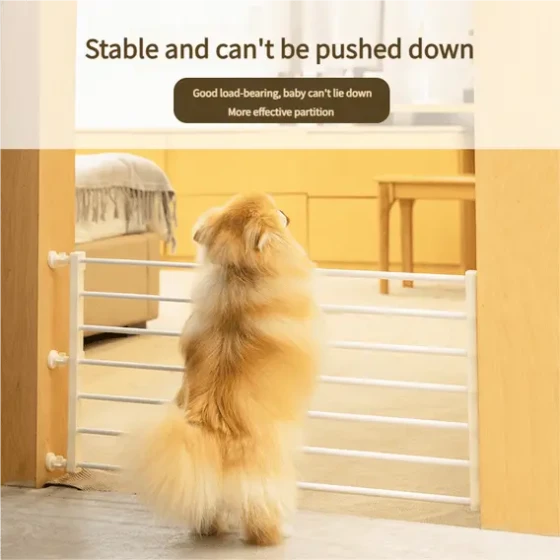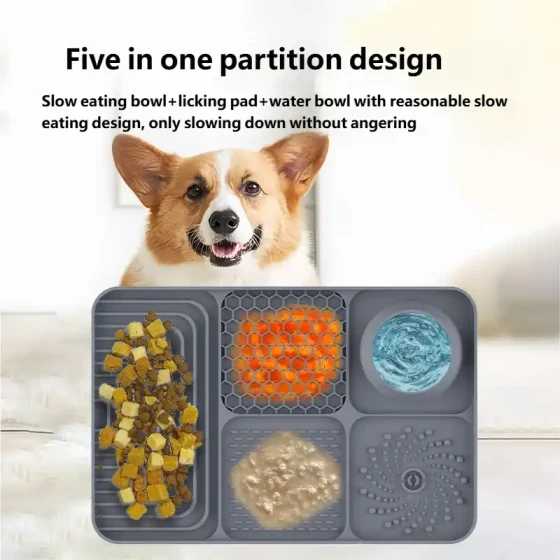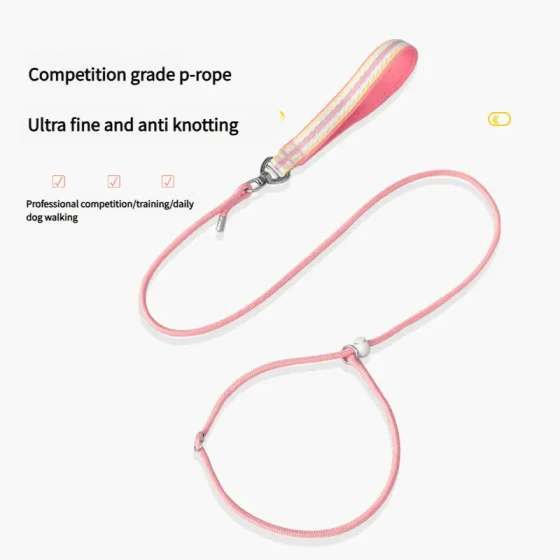How to Train Dogs? The Price of Rottweilers

Rottweiler Training
Rottweilers are easily disturbed by new external stimuli during training and use, showing behaviors like looking around and frequent sniffing. We can overcome this by utilizing their strong desire to possess objects. For example, before training, use a stick or tennis ball for the dog to hold, then tie the object to the arm or waist [where the dog can see but cannot reach it] to attract the dog’s attention. When the dog's work enthusiasm declines, throw a tennis ball to the work area [the location where drugs or explosives are buried or a house, etc.] to re-stimulate the dog's work desire.
Do not frequently release the leash during free roaming.
Compared to German Shepherds, Rottweilers are wilder, more curious, and playful. Therefore, during free roaming, the leash should be loosened as little as possible. Except for toileting and wandering, they should generally be leashed during walks. Otherwise, it is difficult to cultivate obedience and attachment, making further training for tasks more challenging.
Mechanical stimulation can be appropriately increased during basic training subjects.
Rottweilers tolerate relatively strong stimulation; a greater intensity during training can both regulate the dog's actions and help tame its wild nature.
Avoid conflicts between neurological activities when training different subjects.
Since the excitation and inhibition processes in Rottweilers convert slowly, negative and positive subjects should not be trained consecutively. Otherwise, the training effect will be poor. Provide some free roaming time before training to balance the dog's neural activity. Arrange negative subjects first, then positive subjects. Once excited, it is difficult for a Rottweiler to inhibit itself.
Avoid female dogs when training male dogs as much as possible.
Rottweilers have strong sexual reflexes. When encountering a female dog, they will sniff and mount, ignoring the trainer’s commands. This is an irrepressible external inhibition; avoiding female dogs during training is the only method.
Frequent coordinated training ensures the safety of multi-dog work.
Rottweilers are generally calm, and usually do not fight each other. However, when they do fight, it is a “life-or-death fight,” and they tend to hold grudges. Therefore, daily management needs to provide opportunities for them to play together and strengthen cooperative training exercises. For instance, during multi-dog biting training, specify which dog bites first and which bites second, and where they bite. Both the trainer and assistant must pre-plan carefully.
Once a Rottweiler develops inhibition to a specific command or gesture, it is hard to overcome.
Rottweilers have a relatively "stubborn" temperament. Once inhibited by a subject, they refuse to obey commands and may even avoid work. Multiple training methods should be prepared, controlling the extent carefully, stopping when progress is good, and maintaining the dog's enthusiasm for work.
Basic subject training can be interspersed with practical use subject training.
Basic training, especially on physical fundamental subjects (sit, lie down, stand, come, etc.), usually requires strictness and some mechanical stimulation, which easily causes inhibition. Rottweilers respond slowly by nature, and prolonged basic training is unfavorable to skill development. Interspersing use-subject training—which contains many game elements and is pleasurable to the dog—is very beneficial to ability development. Basic training cultivates good behavior, while use-subject training promotes flexibility in neural activity transformation. Combining both complements each other and perfects the dog's neurological type.
Patience is necessary when training inhibitory subjects.
Rottweilers are excitable and active, making inhibitory subject training difficult. Use a gradual approach, choose quiet environments, and alternate long-distance short-time and short-distance long-time training to gradually develop the dog's ability.
Basic Subject Training
The purpose of basic subject training is to lay a foundation for training and practical use and to cultivate obedience, enabling better compliance with the trainer’s commands. Experience shows that obedience directly affects training speed, quality, and practical effectiveness. It also enhances physical fitness, bravery, and balances neurological processes and their transformations. It further determines if the dog can enter use-subject training or is suited for a specialized subject. Therefore, every trainer should attach sufficient importance to this.
In basic training, focus first on developing abilities directly related to use-subjects, such as recall, sitting, lying down, barking, and holding. Other basic subjects can be interspersed after starting use-subject training.
Section 1 Heel
Purpose: To cultivate the dog's ability to walk side by side on the trainer’s left side.
Requirement: The dog's front shoulder aligns with the trainer’s left leg, maintaining a distance of 10-20 cm.
Commands: “Heel,” “Faster,” “Slower.”
Gesture: Left hand naturally drops to lightly tap the left leg.
1. Training Methods
1. When free roaming, hold the leash with the left hand reversed, shorten the leash, issue the "Heel" command, and have the dog walk on the left side. Start with a short distance, about 100-150 meters.
2. When feeding, place the dog on the trainer’s left, hold food in the right hand and leash in the left, issue the "Heel" command and use gestures to guide the dog forward. Reward the dog with food when it maintains a correct posture.
3. Use walls, ditches, embankments for heel training by placing the dog between the trainer and these objects, shortening the leash, commanding "Heel," and using the leash and obstacles to correct the dog's position. After repeated practice, move training to flat terrain.
4. Based on the above, train the dog to heel without leash control. Extend the leash gradually to the ground, and when the dog can heel correctly while dragging the leash, the leash can be removed for training.
2. Common Fault Correction Methods
1. Dog pulls outward. Correct by controlling with the leash or restricting with obstacles. For very excited dogs, use the "No" command and a prong collar.
2. Dog lags due to sluggishness. Correct by offering more rewards to stimulate excitement.
3. Dog wanders during heel. Avoid outside distractions and strengthen the bond between trainer and dog.
Section 2 Sit
Purpose: To establish obedience so the dog can sit on command, laying the foundation for other subjects.
Requirements: Correct posture, quick, natural action, and maintaining the action persistently.
Command: “Sit”
Gestures: Facing forward sitting: right hand raised to the third button, fingers spread, palm facing left. Left-side sit: left hand lightly taps the upper left leg.
1. Training Methods
1. When feeding or free roaming, place the dog on the trainer’s left. Hold food in the right hand above the dog's head to arouse excitement so the dog raises its head and jumps. Since the hind legs bear full weight, the hips touch the ground easily. The trainer then issues the “Sit” command and gesture. Upon sitting, say “Good” and reward with food. For frontal sitting, tie the dog and apply the same method.
2. Place the dog on the trainer’s left, issue the “Sit” command, simultaneously lifting the dog’s collar with the right hand and pressing the dog's waist with the left hand. When the dog is forced to sit, reward immediately.
3. Place the dog in front, issue “Sit,” pull the dog's neck up with the left hand holding the leash and give the sitting gesture. Reward the dog when sitting. Repeat training until the dog forms a conditioned reflex to frontal sit commands and gestures. Then gradually increase the distance up to 50 meters and train the dog to sit on command without a leash.
4. During regular management, when the dog naturally sits, promptly issue the “Sit” command and gesture, and reward the dog immediately after sitting.
2. Common Fault Correction Methods
1. Dog lies down or hips are skewed: redo the command or use a hand to adjust to proper posture; if necessary, tap the skewed part. Reward after correction.
2. Hind legs extend outward: touch the dog's hind leg with left foot to retract it, support the left leg with the left hand. If serious, have the dog sit against a wall, use the left foot to block the right hind leg to prevent outward stretch. Reward when sitting correctly.
3. Hips turn inward or outward when sitting: use hands to adjust and reward; constrain the dog with a leash or repeat the command if the skill isn’t mature, then reward and pet the dog. Avoid always giving treats on the same side.
4. Dog lies down after sitting due to fatigue or confused conditioning between sit and lie down. Separate training of these two subjects is recommended.
Section 3 Free Roam
Purpose: To allow the dog rest and freedom upon command and gesture. It's also a way for trainers to reward the dog.
Requirement: Dog becomes free immediately on command.
Command: “Free Roam”
Gesture: Right hand waves forward in the direction the dog is to go.
1. Training Methods
This subject can be trained simultaneously with heel, recall, and sit.
1. Trainer runs forward holding the dog's leash. After the dog is excited, extend the leash and issue “Free Roam” command in a gentle tone with corresponding gesture. When the dog runs ahead of the trainer, slow down gradually to a stop and let the dog roam freely. After a few minutes, call the dog back, pet or feed as a reward. Repeat 2-3 times in the same session. The trainer should maintain a lively, joyful attitude throughout. After repeated training, the dog will respond to commands and gestures by free roaming.
2. Apart from specific training times, this subject can be integrated after other trainings or during routine frees. Especially effective early in the morning when the dog is particularly excited needing freedom after leaving the kennel.
3. After forming a conditioned reflex to “Free Roam,” the leash can be removed for adequate freedom.
2. Common Fault Correction Methods
1. Dog runs wildly: control with the leash, keep the dog within 20 meters. Use the “No” command and sudden leash tug to correct bad habits.
2. Dog does not leave the trainer: adjust the dog's emotions gently with affectionate tone and rewards. Accompany the dog if necessary, but avoid overdoing it.
Section 4 Lie Down
Purpose: To train the dog to lie down on command and gesture and remain lying until given another command.
Requirement: Rapid, natural action with proper posture.
Commands: “Down,” “Sit up”
Gestures: Left side lying: trainer steps back left leg, kneels with slightly bent torso, right hand fingers together lowering in front of dog's nose. Front lying: right hand fingers together lifted and dropped 90 degrees, palm facing down.
1. Training Methods
1. Command the dog to sit on the left side; trainer kneels, holds collar with left hand, issues “Down” command, gently presses the dog’s shoulder and leg with left forearm, and with right hand holds food to lure the dog to lie down. The trainer returns to standing posture and waits briefly, then issues “Sit up” command while slightly pulling the leash or holding food and gesturing with the left hand. Reward when the dog sits up.
2. Place the dog sitting in front. Trainer kneels with food gesturing with the left hand and gently moves the dog's front limbs forward or holds them gently to make the dog lie down. Reward immediately after lying down. After a short wait, issue “Sit up” command and gesture with left hand pulling the leash or holding food with right hand. Reward when the dog sits up. Repeat training until conditioned reflex forms, then gradually increase trainer-dog distance until the dog lies down and sits up promptly on command within 50 meters.
3. Once the dog can perform at close range, transition to longer distances and remove the leash. If the dog cannot lie down without a leash, use a threatening tone, repeat commands, and mechanical stimulation to encourage lying down. Then reduce verbal commands, using gestures. After some ability is built, prolong the lying down time.
2. Common Fault Correction Methods
1. Dog draws front limbs inward, lowers the neck (lying flat). Correct by straightening front limbs, gently supporting lower limbs, issuing “Stay” command, and rewarding. For dogs neither lying nor sitting properly, gently press the waist or repeat the lie down command.
2. Lying with tilted hips or lying flat. Correct by hand adjustment, mechanical stimulation if necessary, or command the dog to sit up and lie down again.
3. Front limbs splayed or crossed when lying down: use hands to correct combined with appropriate stimulation and rewards.
4. Standing up fully or half, or lying down again after sitting up: during left-side training, preemptively touch the dog’s hips with left hand; issue rapid and serious commands again if half sitting. Issue “Stay” command after sitting to prevent the dog from lying down again.
Section 5 Stay
Purpose: To cultivate the dog’s strong endurance.
Requirement: Able to stay still on command and resist common temptations.
Command: “Stay”
Gestures: Side stay: right hand fingers together, lightly flicking downward in front of dog's nose. Front stay: right hand raised high, palm facing forward.

-560x560.webp)



